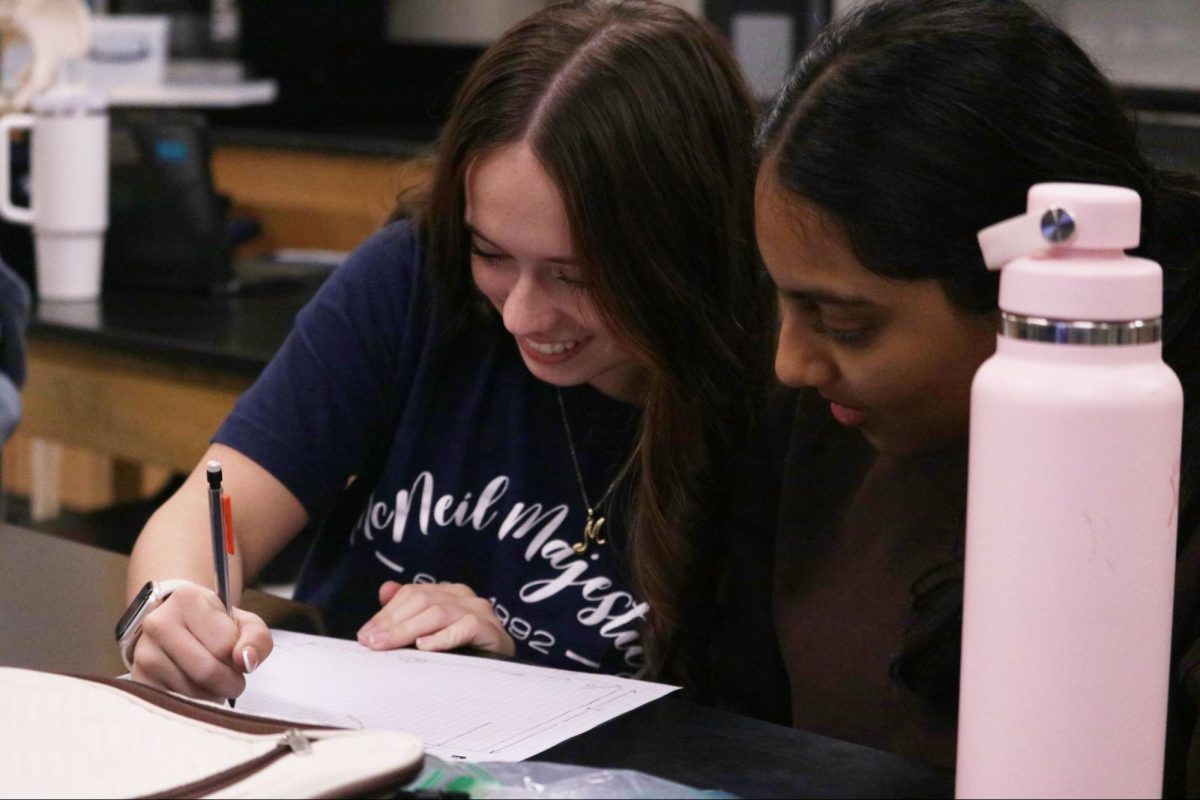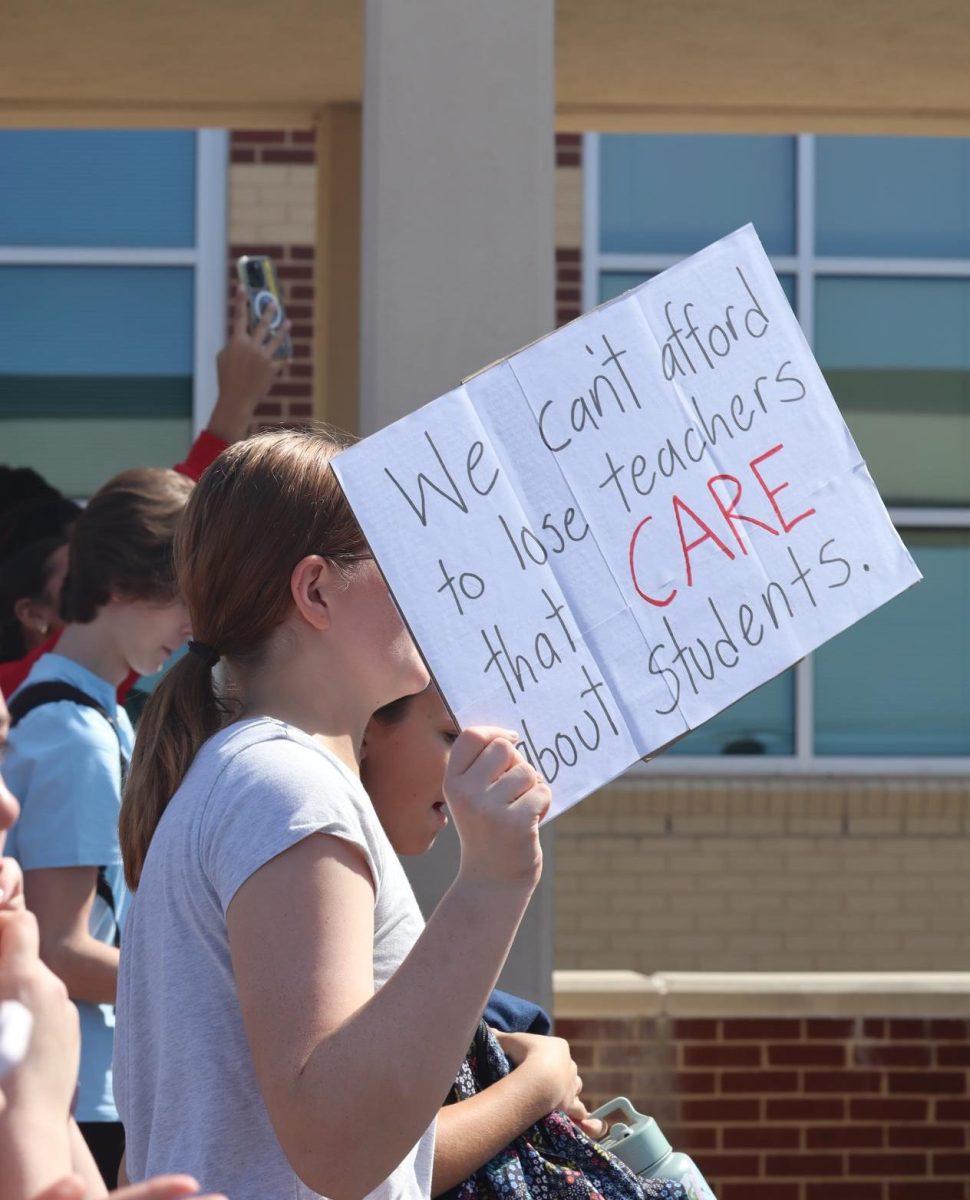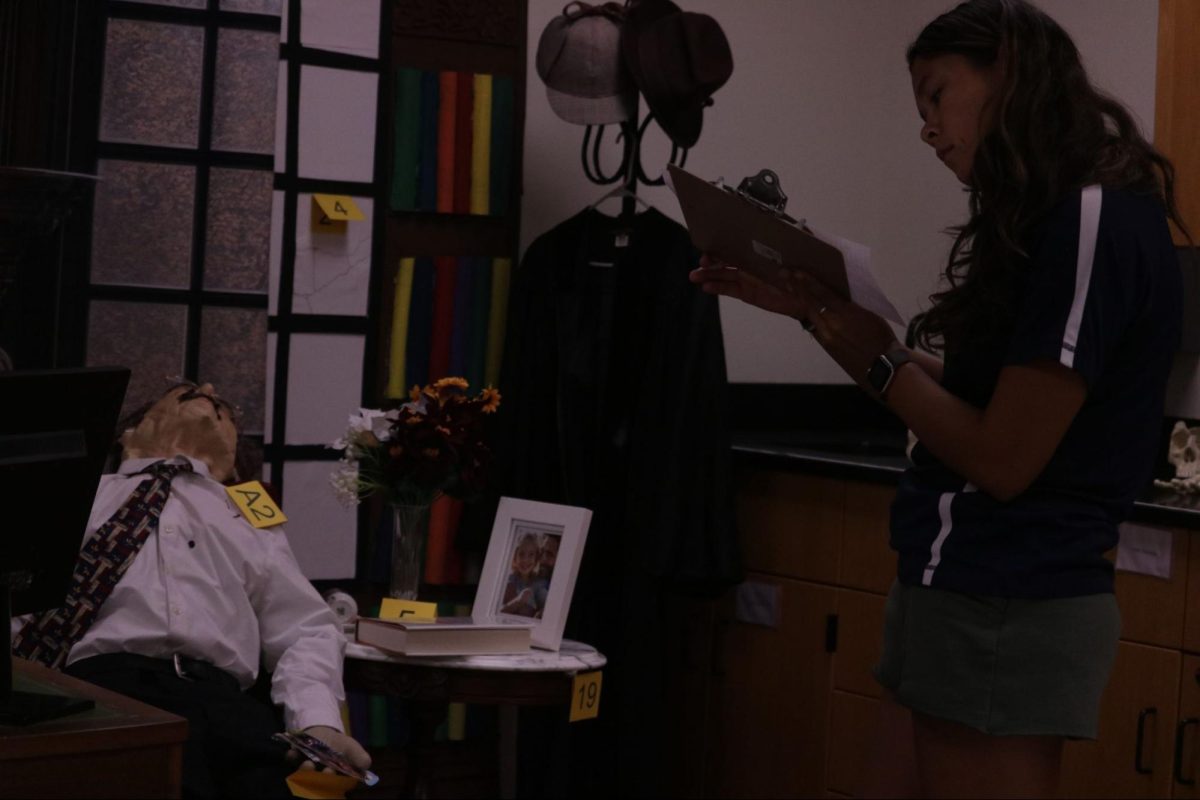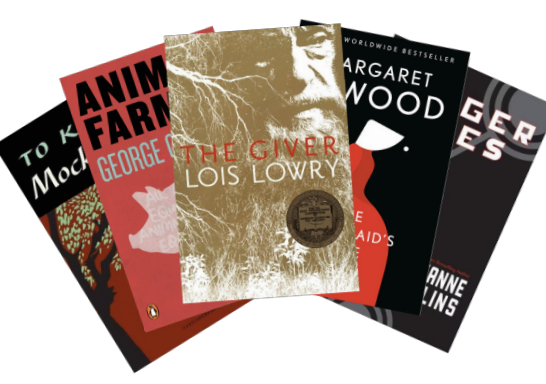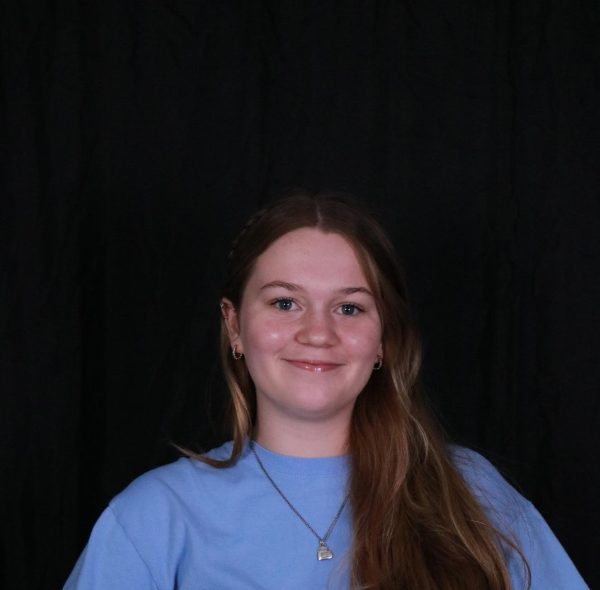Forensic Science students finalized their crime scene sketches on Oct. 10, turning their rough drafts into accurate, to-scale drawings that will help them later in their investigation.
The final sketch marks the completion of the documentation stage in the ongoing lab. Students spent the week translating their initial observations and photographs into accurate diagrams, ensuring each piece of evidence was recorded in its correct location.
“The final draft of the sketch, which would be done ‘back at the office,’ would need to be accurately proportioned,” forensic teacher Carol Seng said. “That is accomplished using the measurements that were taken at the scene, and the sketch is then drawn to scale with each piece of evidence being triangulated and placed in the exact location it was found.”
Before completing their final drafts, students reviewed what details needed to be included and how to ensure each measurement was correct. Seng said the process reinforced the importance of clear documentation in real investigations.
“Each scene is different,” Seng said. “Students are learning how to adapt and what to pay attention to so that all evidence can be correctly identified later in the investigation.”
Students said the assignment helped them understand how organized investigations must be when recording crime scene details.
It is not as easy as it looks,” senior Megan Nguyen said. “You have to make sure every line and label is correct, since even a small mistake could mess up how the evidence is perceived later.”
Students said that finalizing their sketches made the project feel less like a class assignment and more like a real investigation.
“This activity goes just beyond fun,” senior Alyssa Miller said. “It’s giving us a real taste of what actual forensic science looks like. Our teacher treats the setup like an authentic crime scene, reminding us constantly to be careful where we step and repeating ‘do not touch the body,’ at least five times a day.”
With their final sketches completed, students will now begin processing the mock crime scene, collecting fingerprints, tagging items, and learning how to handle evidence under the chain of custody.

